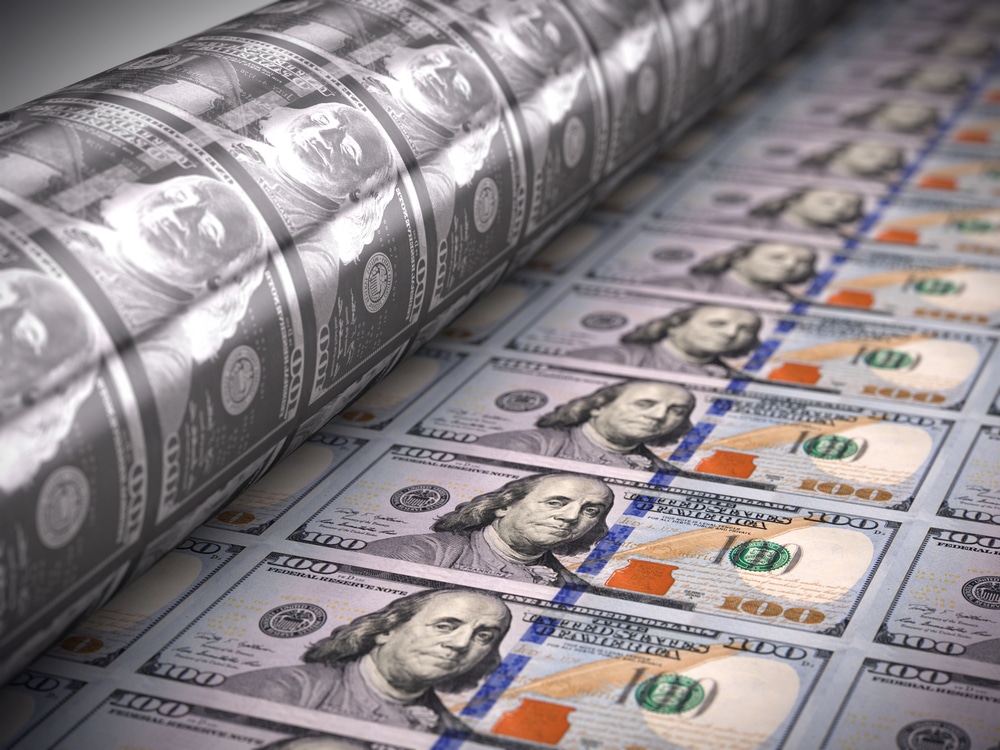For all that the corporate press does to paint the Federal Reserve as adroitly steering the monetary ship of state, one has only to look at the Fed’s actual words to know that however much they may be steering the ship, they have no idea where they are going. As evidence, consider the following selection of some of the Fed’s most prominent pronouncements over the past 36 months.
- March 2020: We won’t have inflation.
- January 2021: The inflation is “transitory.”
- September 2021: Rates won’t rise until 2024.
- November 2021: Inflation may not be “transitory.”
- November 2021: Rates will rise in 2022.
- January 2022: Inflation should fall to 2.5% by December 2022.
- January 2022: Recession is “needed” to lower inflation.
- December 2022: Disinflation has begun.
- January 2023: Disinflation has not begun.
- February 2023: “Soft Landing” is “possible.”
- July 2023: Recession no longer “needed.”
- July 2023: Inflation will hit 2.5% by December 2024.
- March 2023: Banking system is “stable.”
- April-May 2023: Fifteen banks fail.
- September 2023: Inflation will be back to 2% by 2025.
Given this record, a few general observations present themselves.
First is that the Consumer Price Index (CPI) has been increasing again, with headline CPI still remaining almost twice the Fed’s target rate of 2%. And while the calls for the Fed to abandon 2% began almost as soon as it became clear that CPI was about to run out of control, no one at the Fed has deviated from Chairman Jerome Powell’s stated intention of the central bank returning year-on-year inflation to that level.
This leads to observation number two; the markets are equally confused regarding the future direction of inflation and corresponding Fed policy. Just a few weeks ago, CME FedWatch had markets pricing in rate cuts for September of the coming year, 2024; now, they are pricing in rate cuts for June. Of course, prior to Powell’s Jackson Hole speech last year, the markets had been pricing in rate cuts within six months. For his part, Jamie Dimon, CEO of JP Morgan Chase, suggested he is preparing for the Federal Funds rate to go as high as 7%. Meanwhile, for what it’s worth, the latest from the Fed is that they likely expect rates to remain above 5% for the duration of 2024.
Whether the Fed does keep rates above 5% or not, this leads directly to observation number three; fiscal Armageddon has arrived. Their spending habits, developed and honed during a period of artificially low interest rates courtesy of the Federal Reserve, members of Congress now face financing a series of $2 trillion dollar deficits at much higher rates. Apart from what running a structural budget deficit of nearly 6% of GDP in this environment has done and will do to the balance sheet, the Treasury Department’s need to roll over trillions of dollars of previous borrowing will further inflate the already ballooning cost of debt service for the federal government. Up 35% on last year, in the years to come it will become the single biggest outlay in the entire federal budget.
All this has led to economists revising their calculations about when the U.S. national debt will hit $50 trillion to the end of the current decade.
That is just staggering to consider.
In August, the United States was (again) downgraded, this time by Fitch, due to the “steady deterioration in standards of governance over the last 20 years.” Indeed, hard though it is to believe back in the halcyon days of late Bill Clinton and early George W. Bush, the federal government was running a budget surplus and the debt ratio was a manageable 54% of GDP (compared with today’s 120% of GDP). Ignoring unfunded liabilities for the moment, the situation was all so very benign two decades ago.
Now, the non-stop splurging on wars, entitlements, and tax cuts seem to finally be catching up. The combination of the Fed having also now lost it on inflation, with no clear end in sight, has sent yields on U.S. long-dated bonds flying (prices move inversely to yields). This dumping is occurring at a time of really low-water mark Treasury market liquidity. Japan, China, even the European Union—its traditional foreign lenders just aren’t there. While there will always be takers for U.S. debt—legally a number of institutions are required to submit bids at each Treasury auction, and these bids have a minimum threshold to clear—this increased pressure on the domestic banking sector will be coming at a time when it has shown clear signs of stress, from failures to elevated amounts of drawing from the Fed’s emergency credit facilities. As such, some number of additional buyers will be looking to the bond market to speculate, buying long-dated Treasurys on the assumption that when the next crisis happens the Fed defaults to slashing interest rates and hoovering up paper via a new Quantitative Easing (QE) program.
However, if the job market continues to run hot, Powell and co. have given every indication it would factor strongly against cutting rates so long as inflation remains above 2%. With today’s tight labor markets a function of demographic rollover, and some credit due to increased protectionism, significant softening of the labor market is hard to envision. Last year The Wall Street Journal was predicting the first “Full Employment Recession.”
In short, there are a lot of structural factors weighing on the United States’ economic future. A fragmenting global economy will add to inflationary pressures. Monetarily, rates will stay up, and even if Powell starts cutting there is no guarantee long-dated bonds will respond as they have in the past. Higher borrowing costs as a new normal mean the U.S. fiscal house is going to quickly be in even greater shambles than at present.
Really, for all the alarmism in Washington about the imagined threat China poses to the U.S. empire, it would seem the real dangers to the empire are entirely of D.C.’s own making.
To paraphrase Hemingway, bankruptcy happens gradually and then all at once.
At the rate the U.S. government is spending?
Probably not.
































